Chess Pie
Let me tell you something – there’s a reason Chess Pie has stood the test of time. This sweet, custardy Southern classic might look humble, but one bite will have you wondering where it’s been all your life. With its crackly top and velvety interior, it’s pure comfort in dessert form.
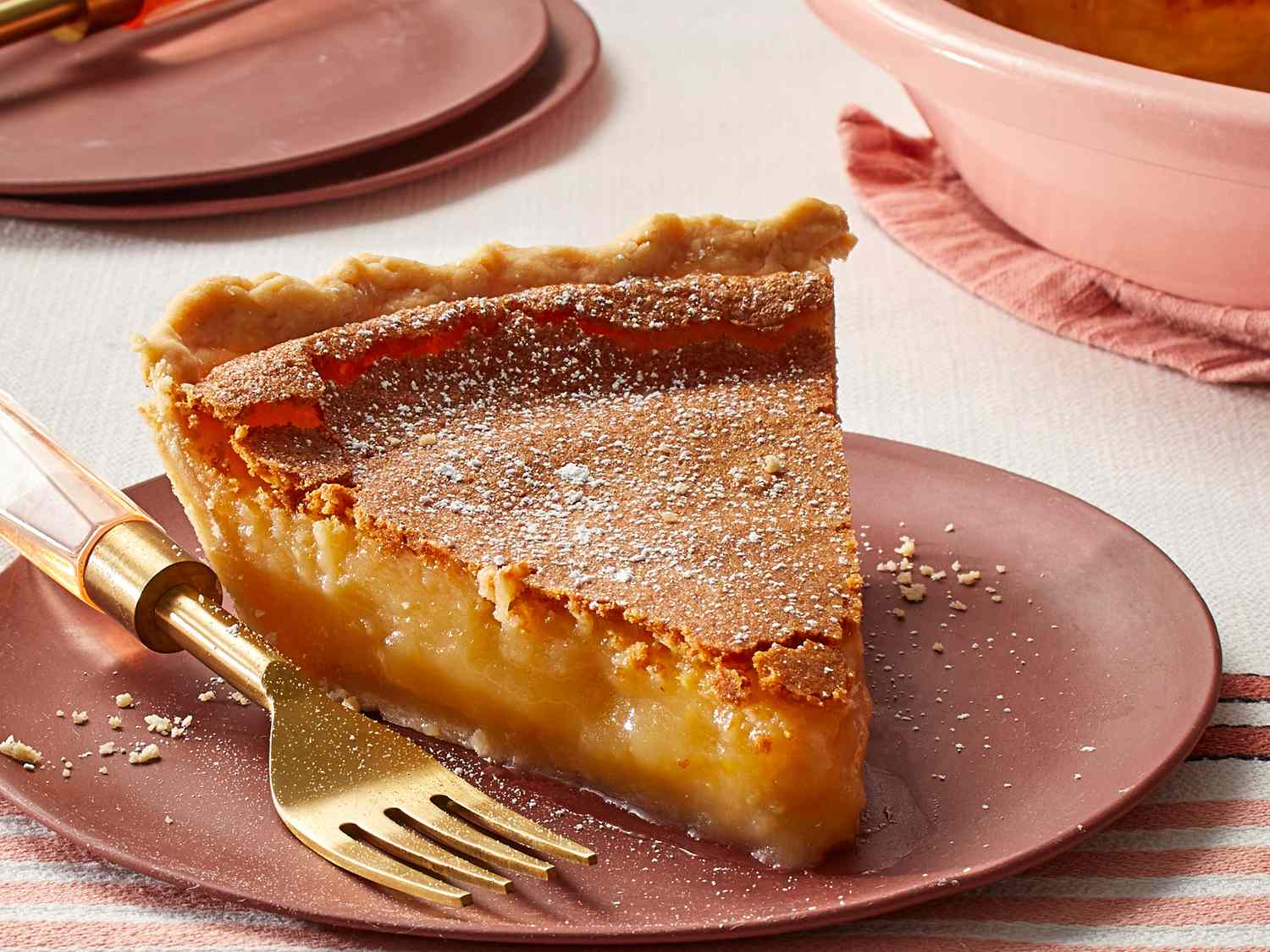
What makes Chess Pie so special? It’s the perfect balance of simplicity and indulgence. That hint of cornmeal gives it structure and that signature texture that sets it apart from other custard pies. The touch of vinegar cuts through the sweetness, while vanilla adds warmth. It’s the kind of dessert that doesn’t need fancy ingredients to impress – just good technique and a little Southern know-how.
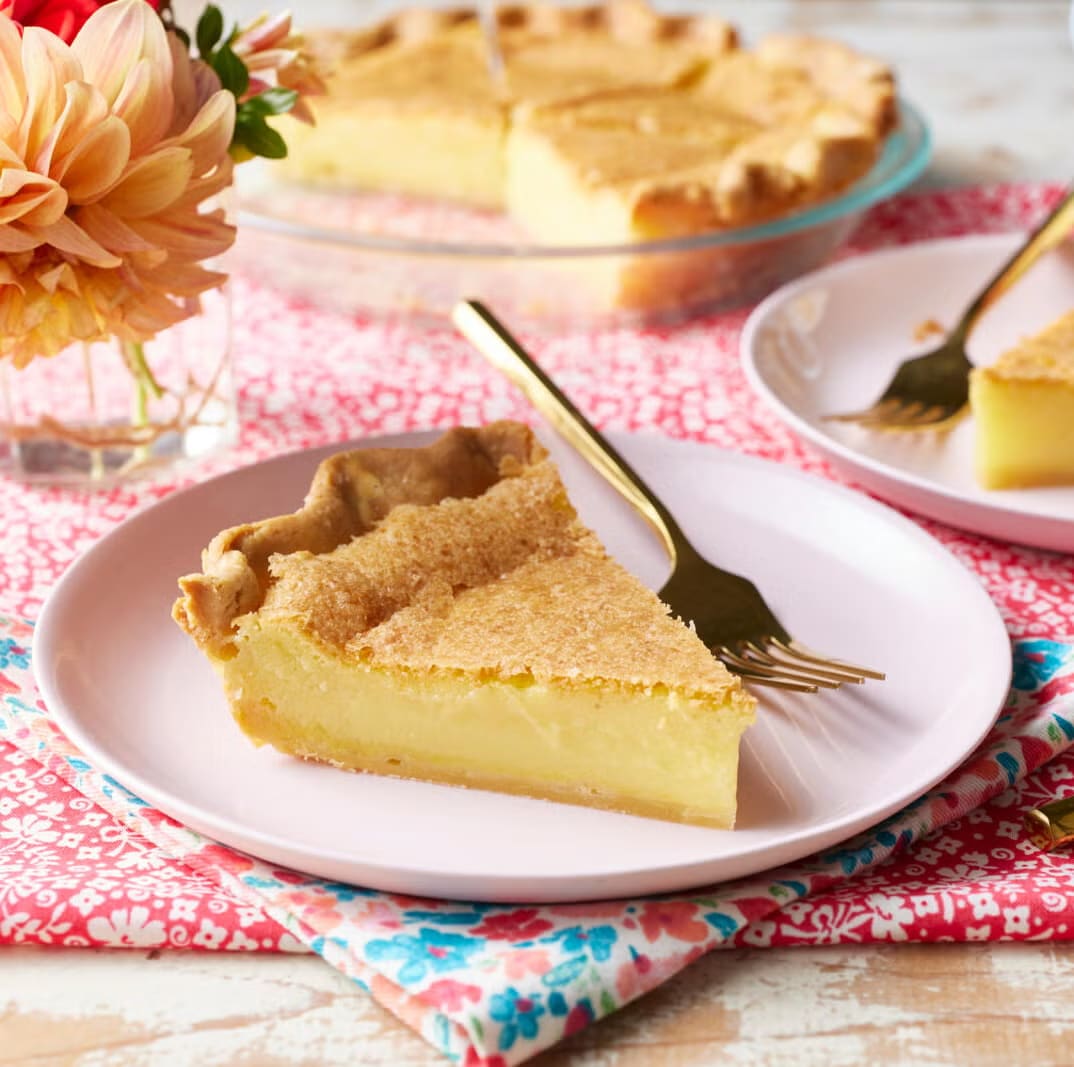
Ingredients
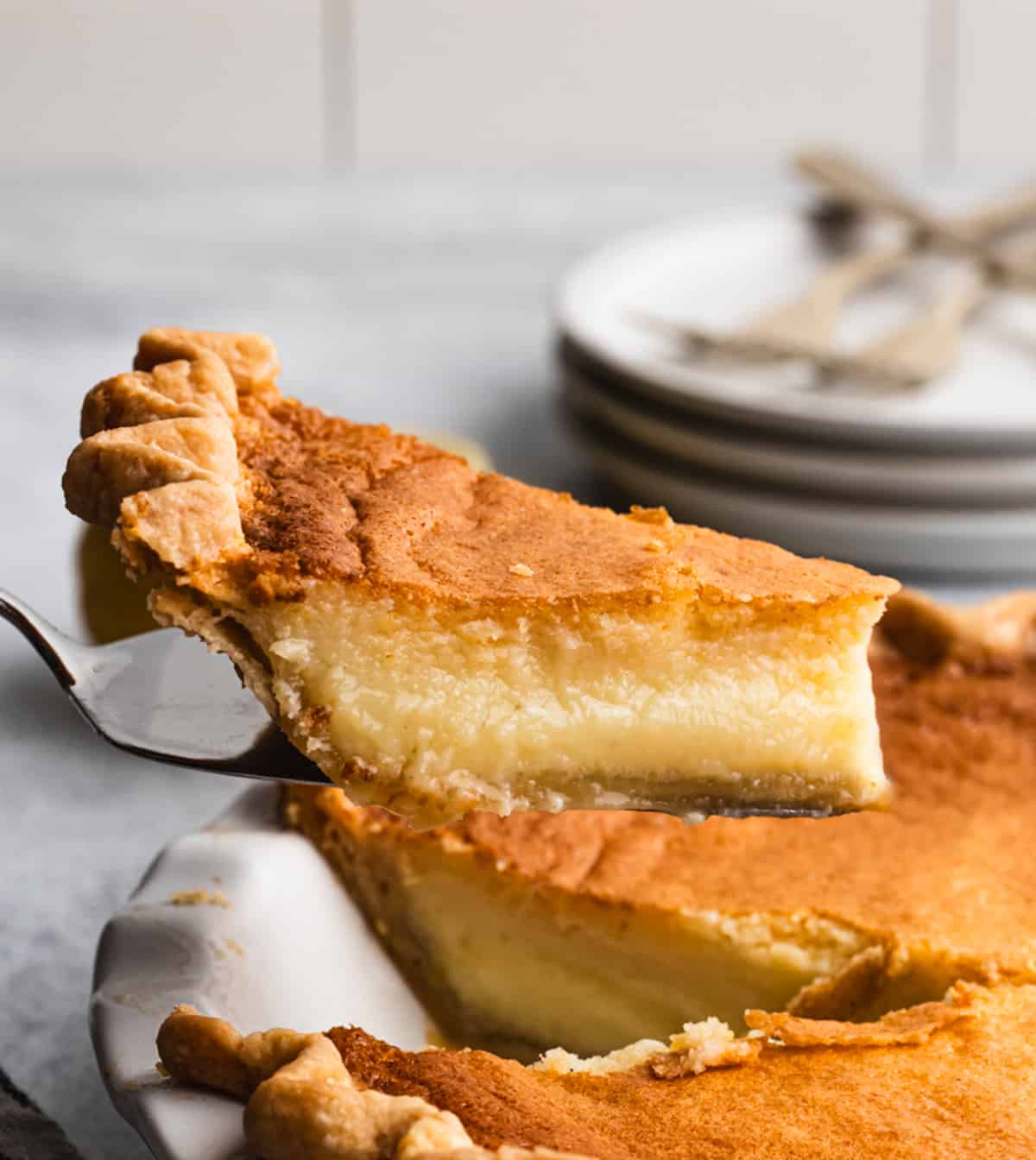
For the crust:
- 1 1/4 cups (175g) all-purpose flour
- 1/2 teaspoon kosher salt
- 1/2 teaspoon white sugar
- 1/2 cup (115g) cold unsalted butter, cubed
- 3 to 4 tablespoons ice cold water
For the filling:
- 4 large eggs
- 1/2 teaspoon kosher salt
- 1 1/2 cups (300g) white sugar
- 1/2 cup (115g) melted unsalted butter
- 1/4 cup milk
- 1/4 cup (35g) cornmeal
- 1 tablespoon all-purpose flour
- 1 tablespoon white vinegar
- 1 tablespoon vanilla extract
- 1/8 teaspoon ground nutmeg, optional
Special Equipment:
- Food processor
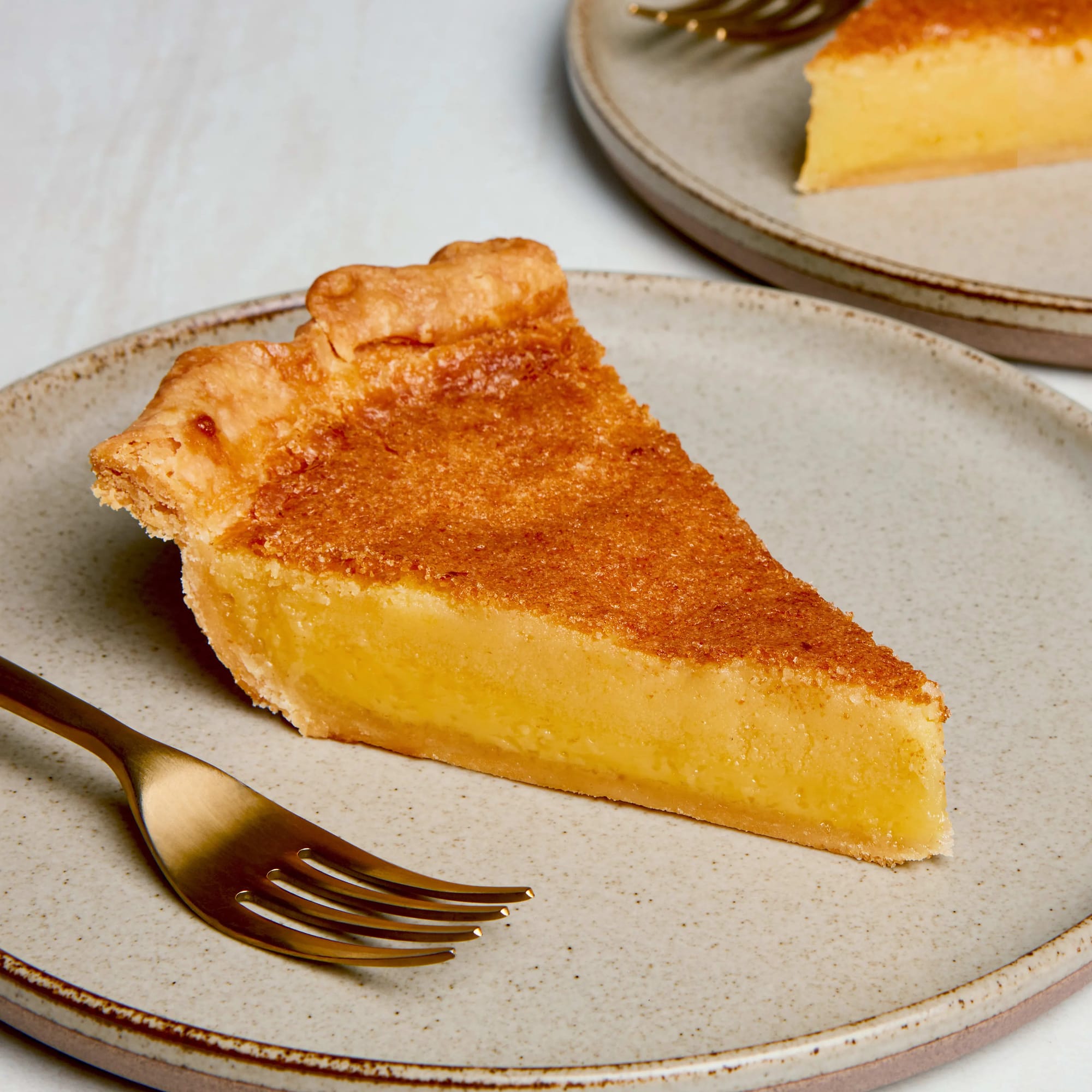
Steps
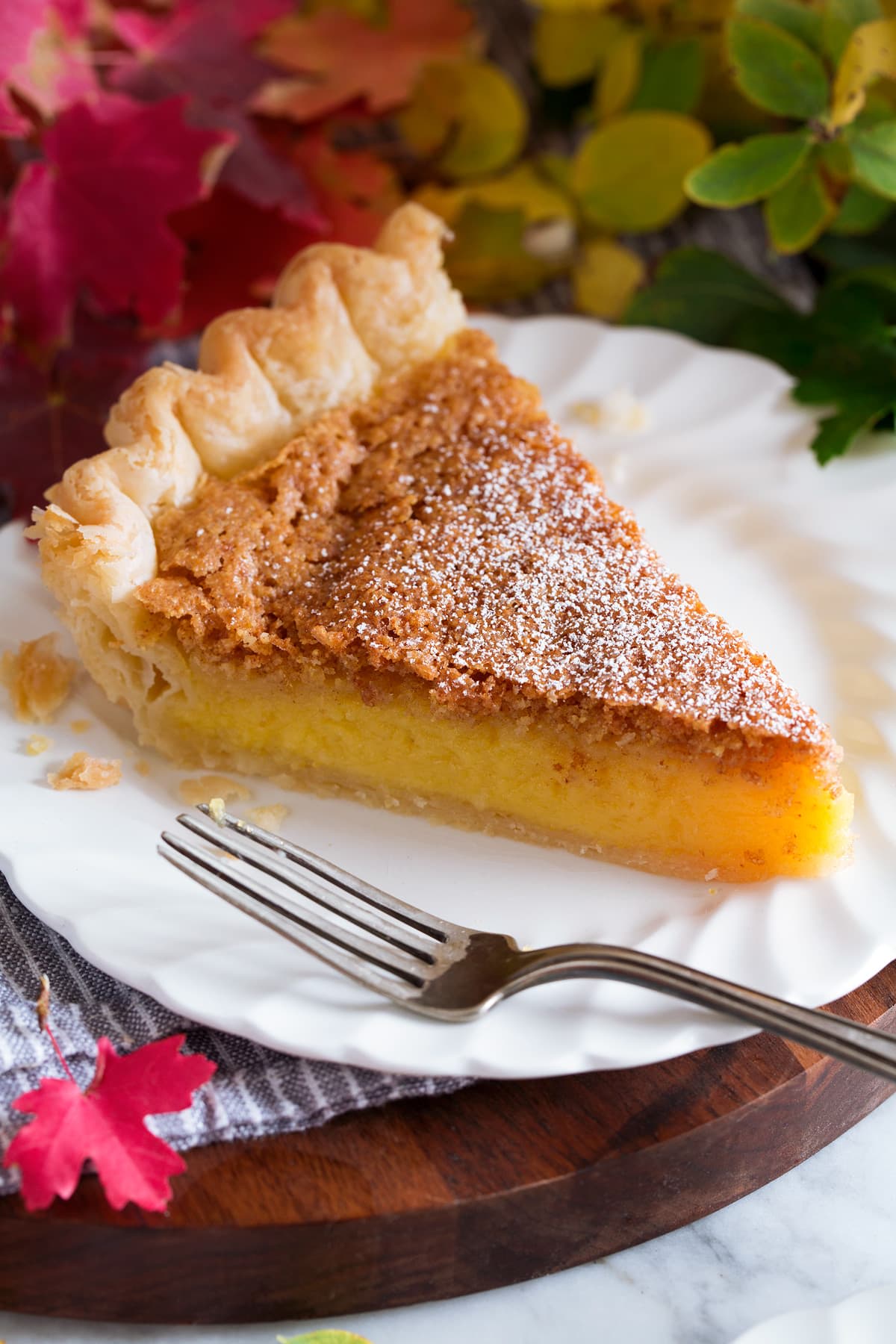
- Make the crust: Add the flour, salt, and sugar to your food processor and pulse 2-3 times to combine. Add the cold cubed butter and pulse 5-6 times until the butter breaks down into pea-sized pieces. This creates pockets of fat that will make your crust flaky, so don’t overmix! Drizzle in 3 tablespoons of ice water and pulse until the mixture resembles small pebbles and holds together when pressed between your fingers. If it seems dry or crumbly, add the remaining 1 tablespoon of water.
- Form the dough into a disk: Turn the dough onto a piece of plastic wrap and shape into a round disk about 1 inch thick. Wrap tightly and refrigerate for at least 1 hour or overnight. This resting period is crucial for relaxing the gluten and firming up the butter for a tender, flaky crust.
- Roll out the dough: Once chilled, roll the dough into a 12-inch disk on a lightly floured surface. Work quickly to keep the butter cold! Fit the dough into your pie pan, trim excess, and create a decorative crimped edge by pressing down firmly to anchor the crust to the pan. Return to the refrigerator for 15 minutes to prevent shrinkage during baking.
- Preheat the oven: While the crust chills, preheat your oven to 425°F (220°C).
- Parbake the crust: Prick the bottom of the chilled crust all over with a fork to prevent bubbling. Place parchment paper over the crust, leaving overhang for easy removal, and fill with pie weights, dry beans, uncooked rice, or pennies. Bake for exactly 5 minutes. Remove the weights and parchment, then return the crust to the oven for another 3-4 minutes until the surface looks dry but not fully baked. Set aside to cool slightly.
- Reduce oven heat: Lower the oven temperature to 350°F (175°C).
- Make the filling: In a large bowl, add the eggs and salt. Beat with a fork until uniform in color, but be careful not to overbeat – you want to avoid creating too much foam, just enough to blend the whites and yolks. Add the sugar, melted butter, milk, cornmeal, flour, vinegar, vanilla extract, and nutmeg (if using). Whisk until all ingredients are evenly incorporated but still fluid.
- Fill and bake: Pour the filling mixture into the parbaked crust and carefully transfer to the oven. Bake for 45-50 minutes until the center is set and no longer wobbles when gently shaken. The filling should reach an internal temperature of about 200°F (93°C) when done. After 30 minutes of baking, check the crust – if it’s browning too quickly, cover the edges with aluminum foil or a pie shield to prevent burning.
- Rest and serve: Remove the pie from the oven and allow it to cool completely to room temperature before serving. This cooling period (at least 2 hours) is essential for the custard to fully set and develop its signature texture. The top will form a delicate, crackly crust while the inside remains creamy and luscious.
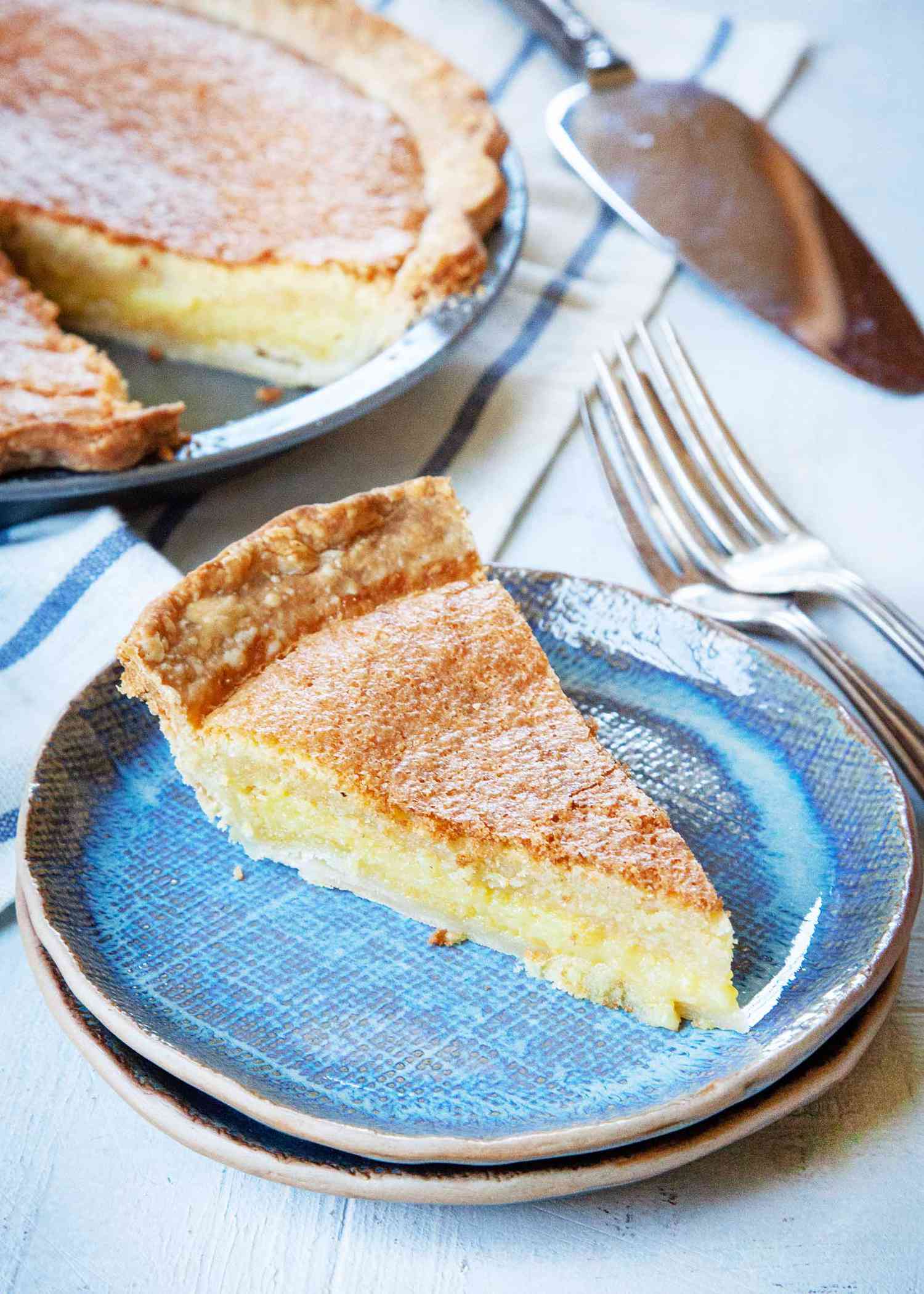
Smart Swaps
- Replace milk with buttermilk (same amount) for a tangier flavor that balances the sweetness
- Substitute brown sugar for half the white sugar (keep same total amount) for deeper caramel notes
- Try bourbon vanilla extract instead of regular vanilla for a subtle Southern twist
- Use fine yellow cornmeal instead of white for a more pronounced corn flavor and golden color
Make It Diabetes-Friendly
- Replace the 1 1/2 cups sugar with 3/4 cup allulose plus 1/2 teaspoon stevia extract to reduce carbs by approximately 28g per serving
- Use unsweetened almond milk instead of regular milk to save 3g carbs per serving
- Add 1/4 teaspoon cinnamon along with the nutmeg to enhance sweetness perception without added sugar
- Serve in smaller portions (12 slices instead of 8) and pair with a few fresh berries to slow glucose absorption
Pro Tips
- Freeze your butter for 15 minutes before cubing it for the crust – the colder it stays during mixing, the flakier your result
- The cornmeal provides that signature Chess Pie texture, but make sure it’s finely ground – medium or coarse grind will make the filling gritty
- Don’t skip the vinegar! It’s not there just for flavor – it helps cut the sweetness and creates that characteristic crackly top
- For the shiniest top crust, brush the surface with 1 teaspoon of milk before baking